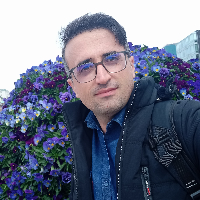We use cookies on this website. Cookies help us deliver the best experience on our website. Read about cookies.
-
- Education
- Education
- Programmes and courses
- Applications and admissions
- Tuition fees
- Scholarships
- Exchange studies at Malmö University
- Study Guidance
-
- After admission
- After admission
- Moving to Malmö
- Pre-orientation
- Arrival guide
-
- About studies at Malmö University
- About studies at Malmö University
- Why choose Malmö University
- Understanding university studies
- Connect with our students
On the page -
- Research
- Research
-
- Doctoral studies
- Doctoral studies
- Doctoral courses
-
- Doctoral schools
- Doctoral schools
- Doctoral school: Education, Learning and Globalisation
- Doctoral school: The National Research School for Professionals in Social Services
- Doctoral school: Learning in Multicultural Societal Contexts
- Doctoral school: ComBine
- Doctoral school: Swedish National Graduate School in Science and Technology Education Research
- Doctoral school: Relevancing Mathematics and Science Education (RelMaS)
- Doctoral school: Sustainable Movement Education
- Doctoral school: Finding ways in a time of great future challenges (FinnFram)
- Doctoral school: Pedagogy and Vocational Skills
- Doctoral school: Culturally Empowering Education through Language and Literature
- Research subjects
-
- Research centres
- Research centres
- Biofilms Research Centre for Biointerfaces
- Citizen Health
- Imagining and Co-Creating Futures
- Institute for Urban Research
- Malmö Institute for Migration Studies
- Literacy and Inclusive Teaching
- Centre for Work Life Studies
- Sustainable Digitalisation Research Centre
- Centre for Sexology and Sexuality Studies
-
- Research publications
- Research publications
- Search publications
- Malmö University Press
- Research events
- Participate in a research study
- Coffee Break Quiz
On the page -
- Collaboration and Innovation
- Collaboration and Innovation
- Innovation
- Collaboration with students
-
- Collaborate with researchers
- Collaborate with researchers
- Labs and facilities
- Culture collaboration
- Support Malmö University
-
- Alumni & Friends
- Alumni & Friends
- Graduation and alumni network
On the page -
- About us
- About us
-
- Faculties and departments
- Faculties and departments
-
- Faculty of Culture and Society
- Faculty of Culture and Society
- Department of Urban Studies
- Department of Global Political Studies
- School of Arts and Communication
-
- Faculty of Education and Society
- Faculty of Education and Society
- Department of Childhood, Education and Society
- Department of Sports Sciences
- Department of Natural Science, Mathematics and Society
- Department of School Development and Leadership
- Department of Culture, Languages and Media
- Department of Society, Culture and Identity
-
- Faculty of Technology and Society
- Faculty of Technology and Society
- Department of Computer Science and Media Technology
- Department of Materials Science and Applied Mathematics
-
- Faculty of Odontology
- Faculty of Odontology
- Master's programmes in Dental Science
- University Dental Clinic
- Management and decision-making paths
-
- Vision, objectives and strategy 2025
- Vision, objectives and strategy 2025
- Global engagement
- Sustainability
- Widened recruitment and participation
- Quality assurance work at the University
-
- Malmö Academic Choir and Orchestra
- Malmö Academic Choir and Orchestra
- Student work – video pieces
-
- Annual Academic Celebration
- Annual Academic Celebration
- Academic traditions
- Meet our new professors
- The University in a troubled world
On the page

Azad
Shokrollahi
Doctoral student
azad.shokrollahi@mau.se
+46 (722) 092-134
orcid.org/0009-0006-2237-3010
Presentation
I am PhD students at Malmo university, my backgrounds are:
• Edge AI: federated learning, split learning, distributed AI, intelligent IoT, distributed learning, intelligent mobile edge computing. • • IoT: Healthcare Internet of Things (HIoT), Unmanned Aerial Vehicles (UAVs), Vehicular Internet of Things (VIoT) and Autonomous Driving, Satellite Internet of Things (SIoT), and Industrial Internet of Things (IIoT), Smart city. • • Other: Extended reality (XR) (Augmented Reality (AR), Mixed Reality (MR) and Virtual Reality (VR)), Digital Twins, Blockchain. (Combination of Digital twins+blockchain+Federated learning+Extended reality) • • Data: Big data, Data mining, Process mining, Data stream, Real-time data, image processing, computer vision, video mining. • Machine learning: Supervised Learning, Unsupervised Learning, Semi-Supervised Learning, Reinforcement Learning, Deep learning, Multi task learning. • • Computer network: wireless communications, Wireless sensor networks, Mobile network (6G/ 5G), LAN, MAN, WAN, Software-defined networking, NFV) • • Computing: distributed computing, parallel computing, cluster computing, High performance computing, edge computing (mobile edge computing), fog computing, cloud computing, GPU computing, accelerated computing. • Big data and Machine Learning tools: Hadoop (MapReduce, HDFS, NoSQL, Mahout, YARN, HIVE, Spark MLLib and…), spark, Keras, TensorFlow, Google colab, Pytorch, Caffe2, Spss, Python (scikit-learn, pandas, NumPy, Numba, scipy, and…). ✓ RAPIDS (Apache Arrow, Blazing SQL), (DASK + OPENUCX+ RAPID ✓ CUDA Python, CUDA Toolkit, CUDA-X AI, CUDA-X HPC, cuDNN, Thrust, OpenACC, Omniverse, Math Libraries, FLARE (Federated Learning Active Runtime Environment), data Stream. Now in Internet of Things and People projects we use different machine learning algorithms in order to date the anomaly detection. Also we work on data reduction, feature selection for big data and real time systems. Additionally, we work with different companies such as Sony and Sony Ericsson
Publications
-
2025 | Conference paper
Non-Invasive People Counting in Smart Buildings: Employing Machine Learning with Binary PIR Sensors
Azad Shokrollahi, Fredrik Karlsson, Reza Malekian, Jan A. Persson, Arezoo Sarkheyli-Hägele
-
2024 | Article in journal
High-Performance Flow Classification of Big Data Using Hybrid CPU-GPU Clusters of Cloud Environments
Azam Fazel-Najafabadi, Mahdi Abbasi, Hani H. Attar, Ayman Amer, Amir Taherkordi, Azad Shokrollahi, Mohammad R. Khosravi, Ahmed A. Solyman
-
2024 | Article in journal
Passive Infrared Sensor-Based Occupancy Monitoring in Smart Buildings: A Review of Methodologies and Machine Learning Approaches
Azad Shokrollahi, Jan A. Persson, Reza Malekian, Arezoo Sarkheyli-Hägele, Fredrik Karlsson
